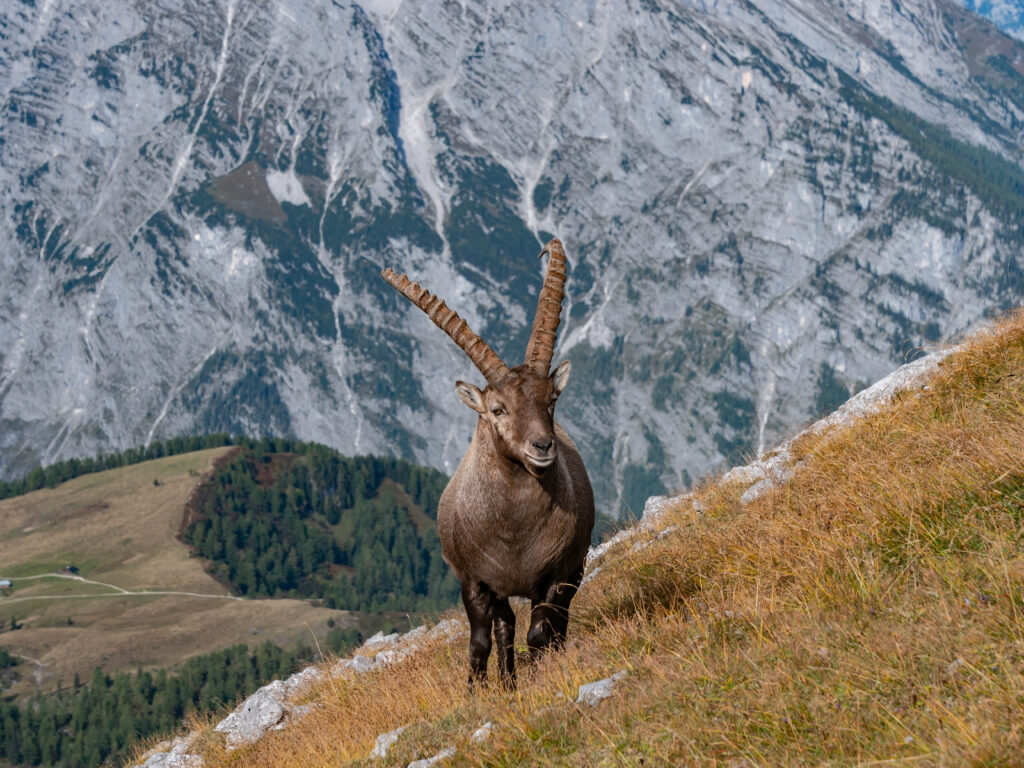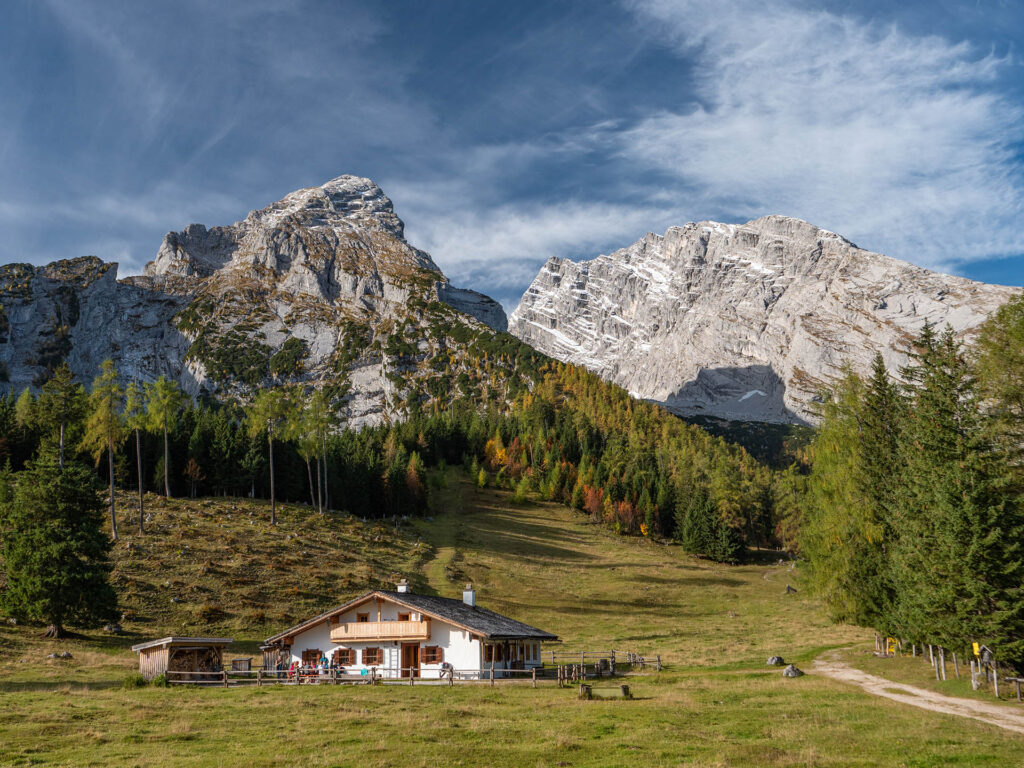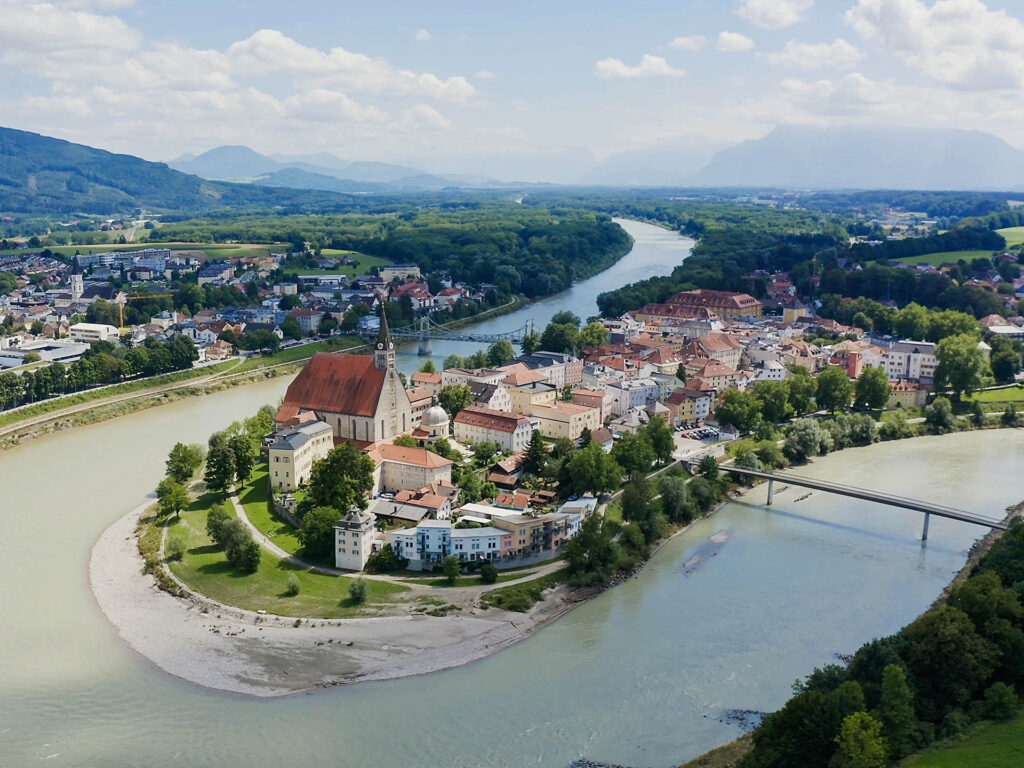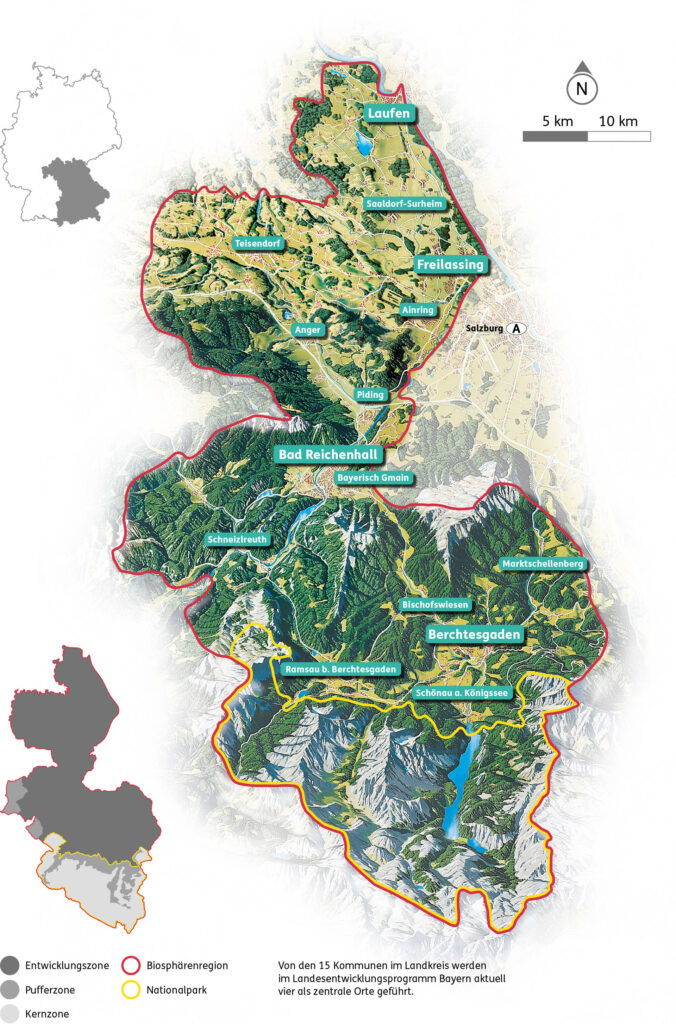Map and zoning
Core zone, buffer zone and development zone
To be recognized by UNESCO as a biosphere reserve, it is obligatory to have a three-part zoning with graded intensity of use and different functions. Thus, the Biosphere Region Berchtesgadener Land is divided into a core zone, buffer or maintenance zone and a development zone. The core zone lies entirely within the Berchtesgaden National Park, which includes in particular the high mountain regions in the south of the area. The buffer zone consists of the maintenance zone of the national park and two nature reserves. The largest area is covered by the development zone on the remaining area of the district. In this zone a sustainable coexistence of man and nature is to be created.

Core zone
Buffer Zone


Development zone
The three zones of the Berchtesgadener Land Biosphere Region
The Biosphere Region Berchtesgadener Land covers 840 km2. It encloses the entire district from the pre-Alpine north to the Alpine south. Like every UNESCO biosphere reserve, the Berchtesgadener Land Biosphere Region is divided into three zones with different intensity of use and different functions: The development zone, the maintenance or buffer zone and the core zone. The core zone of the Biosphere is identical to the core zone of the Berchtesgaden National Park without any form of human use. In the maintenance zone, adapted land use is permitted in order to preserve the typical cultural landscape. In the development zone, which covers the largest area of the Biosphere Region, the goal is to develop a sustainable coexistence of man and nature.
